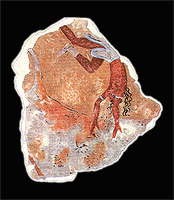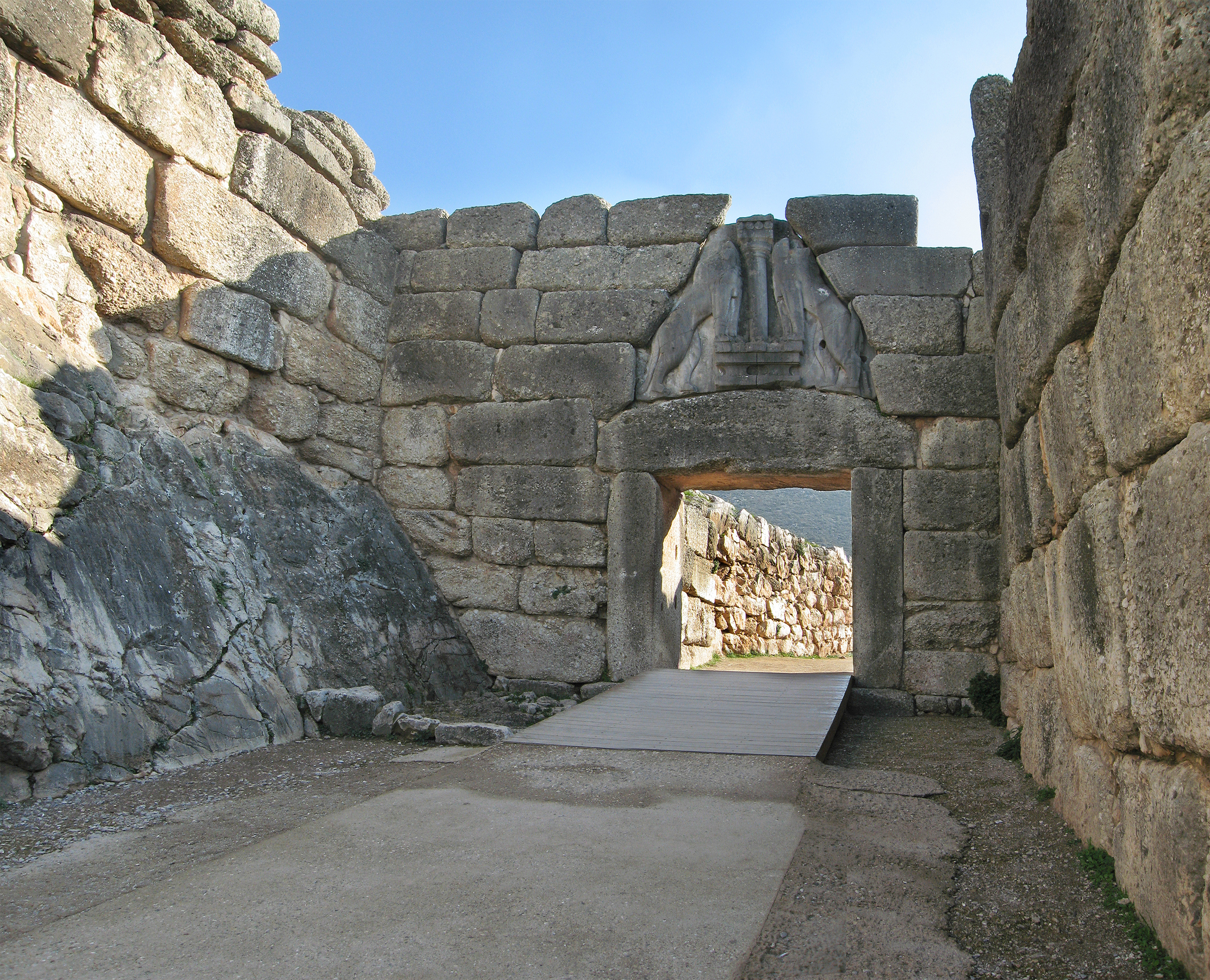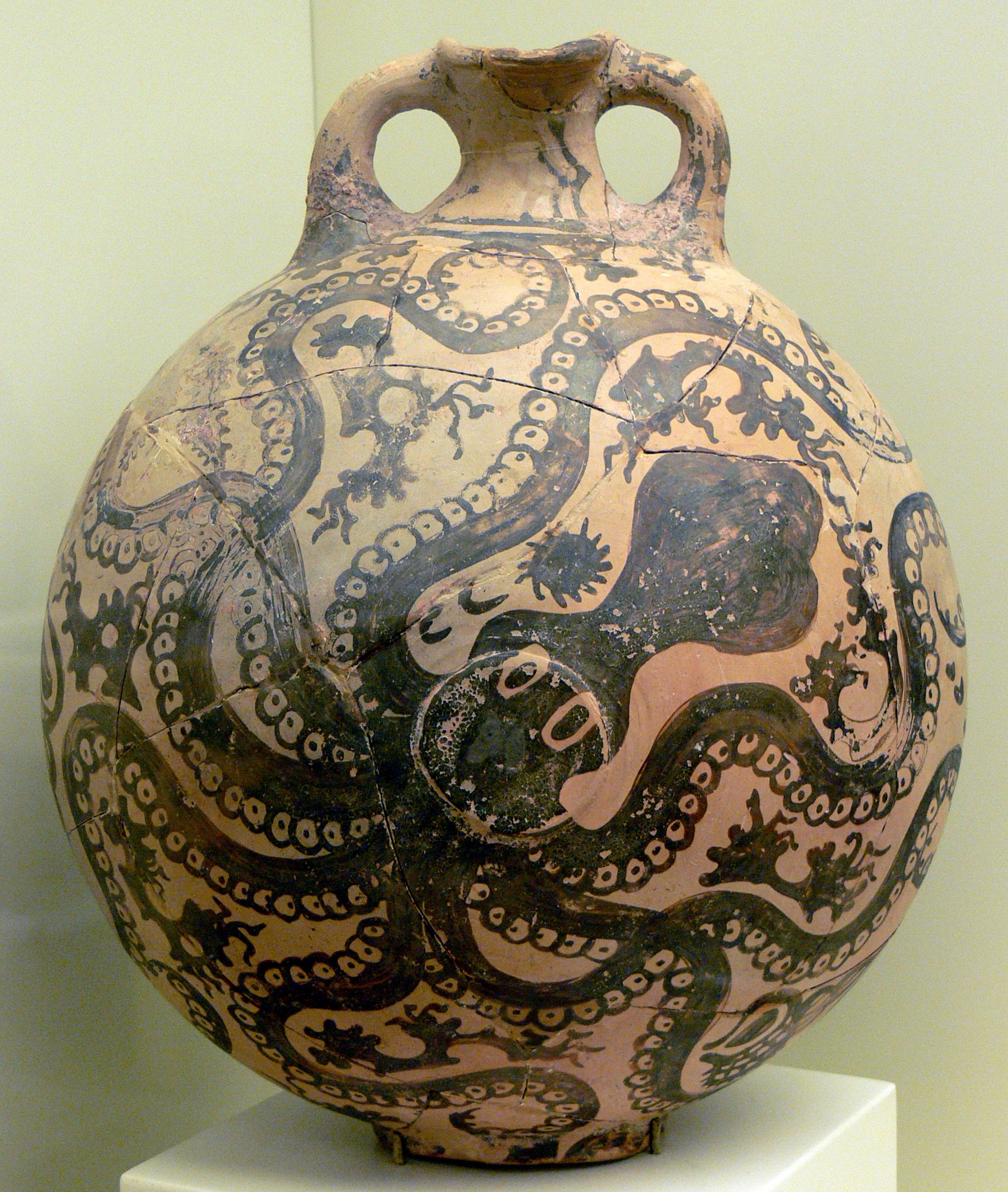|
Bull-leaping
Bull-leaping (, ) is a term for various types of non-violent bull fighting. Some are based on an ancient ritual from the Minoan civilization involving an acrobat leaping over the back of a charging bull (or cow). As a sport it survives in Spain, with bulls, as ; in modern France, usually with cows rather than bulls, as ; and in Tamil Nadu, India with bulls as Jallikattu. Ritual leaping over bulls is a motif in Middle Bronze Age figurative art, especially in Minoan art, and what are probably Minoan objects found in Mycenaean Greece, but it is also sometimes found in Hittite Empire, Hittite Anatolia, the Levant, Bactria–Margiana Archaeological Complex, Bactria and the Indus Valley civilisation, Indus Valley. It is often interpreted as a depiction of a rite performed in connection with bull worship. Iconography Younger (1995) classifies bull-leaping depictions in Bronze Age Aegean art as follows: * Type I: the acrobatics, acrobat approaches the bull from the front, grabs the ... [...More Info...] [...Related Items...] OR: [Wikipedia] [Google] [Baidu] |
Minoan Art
Minoan art is the art produced by the Bronze Age Aegean civilization, Aegean Minoan civilization from about 3000 to 1100 BC, though the most extensive and finest survivals come from approximately 2300 to 1400 BC. It forms part of the wider grouping of Aegean art, and in later periods came for a time to have a dominant influence over Cycladic art. Since wood and textiles have decomposed, the best-preserved (and most instructive) surviving examples of Minoan art are its Minoan pottery, pottery, Minoan palace, palace architecture (with frescos which include "the earliest pure landscapes anywhere"), small sculptures in various materials, jewellery, metal vessels, and Minoan seals, intricately-carved seals. It was influenced by the neighbouring cultures of Ancient Egypt and the ancient Near East, which had produced sophisticated urban art for much longer, but the character of the small but wealthy mercantile Minoan cities was very different, with little evidence of large temple-base ... [...More Info...] [...Related Items...] OR: [Wikipedia] [Google] [Baidu] |
Minoan Frescoes From Tell El-Daba
The Minoan wall paintings at Tell el-Dab'a are of particular interest to Egyptologists and archaeologists. They are of Minoan style, content, and technology, but there is uncertainty over the ethnic identity of the artists. The paintings depict images of bull-leaping, bull-grappling, griffins, and hunts. They were discovered by a team of archaeologists led by Manfred Bietak, in the palace district of the Thutmosid period at Tell el-Dab'a. The frescoes date to the Eighteenth dynasty of Egypt, most likely during the reigns of either the pharaohs Hatshepsut (reigned c. 1479 – 1458 BCE) or Thutmose III (reigned 1479 – 1425 BCE), after being previously considered to belong to the late Second Intermediate Period. The paintings indicate an involvement of Egypt in international relations and cultural exchanges with the Eastern Mediterranean either through marriage or exchange of gifts. Palace District of the Thutmosid Period The palace district of the Thutmosid period covers a pa ... [...More Info...] [...Related Items...] OR: [Wikipedia] [Google] [Baidu] |
Course Landaise
The ''course landaise'' is an ancient form of bullfighting and bull-leaping held in oval or rectangular arenas covered in sand, that involves no bloodshed. Experienced cows, with large horns, aged generally from 2 to 14 years old, are used instead of bulls. They are athletic but (by modern standards) small animals selected from the same breed as the bulls used for the Spanish . In Gascony, it is a major spectator sport, counting as many as 600 events each year. The is one of various forms of entertainment involving a bull or a cow found throughout the south of France, and the Iberian peninsula. The is for the most part the main attraction of the yearly celebrations held in villages of western Gascony (Bas-Armagnac, Chalosse, and Bearn) and as far west as Bayonne. Other forms of related entertainments are the running of the bulls made famous in the neighboring Spanish Basque Country by the Ferias of Pamplona, but also enjoyed in Bayonne and smaller towns of Gascony such a ... [...More Info...] [...Related Items...] OR: [Wikipedia] [Google] [Baidu] |
Minoan Civilization
The Minoan civilization was a Bronze Age culture which was centered on the island of Crete. Known for its monumental architecture and energetic art, it is often regarded as the first civilization in Europe. The ruins of the Minoan palaces at Knossos and Phaistos are popular tourist attractions. The Minoan civilization developed from the local Neolithic culture around 3100BC, with complex urban settlements beginning around 2000BC. After 1450BC, they came under the cultural and perhaps political domination of the mainland Mycenaean Greeks, forming a hybrid culture which lasted until around 1100BC. Minoan art included elaborately decorated pottery, seals, figurines, and colorful frescoes. Typical subjects include nature and ritual. Minoan art is often described as having a fantastical or ecstatic quality, with figures rendered in a manner suggesting motion. Little is known about the structure of Minoan society. Minoan art contains no unambiguous depiction of a monarch, and t ... [...More Info...] [...Related Items...] OR: [Wikipedia] [Google] [Baidu] |
Mycenaean Greece
Mycenaean Greece (or the Mycenaean civilization) was the last phase of the Bronze Age in ancient Greece, spanning the period from approximately 1750 to 1050 BC.. It represents the first advanced and distinctively Greek civilization in mainland Greece with its palatial states, urban organization, works of art, and writing system.. The Mycenaeans were mainland Greek peoples who were likely stimulated by their contact with insular Minoan Crete and other Mediterranean cultures to develop a more sophisticated sociopolitical culture of their own. The most prominent site was Mycenae, after which the culture of this era is named. Other centers of power that emerged included Pylos, Tiryns, and Midea in the Peloponnese, Orchomenos, Thebes, and Athens in Central Greece, and Iolcos in Thessaly. Mycenaean settlements also appeared in Epirus, Macedonia, on islands in the Aegean Sea, on the south-west coast of Asia Minor, and on Cyprus, while Mycenaean-influenced settlements appear ... [...More Info...] [...Related Items...] OR: [Wikipedia] [Google] [Baidu] |
Knossos Bull Leaping Fresco
Knossos (; , ; Linear B: ''Ko-no-so'') is a Bronze Age archaeological site in Crete. The site was a major centre of the Minoan civilization and is known for its association with the Greek myth of Theseus and the minotaur. It is located on the outskirts of Heraklion, and remains a popular tourist destination. Knossos is considered by many to be the oldest city in Europe. Knossos is dominated by the monumental Palace of Minos. Like other Minoan palaces, this complex of buildings served as a combination religious and administrative centre rather than a royal residence. The earliest parts of the palace were built around 1900 BC in an area that had been used for ritual feasting since the Neolithic. The palace was continually renovated and expanded over the next five centuries until its final destruction around 1350 BC. The site was first excavated by Minos Kalokairinos in 1877. In 1900, Arthur Evans, Sir Arthur Evans undertook more extensive excavations which unearthed most of th ... [...More Info...] [...Related Items...] OR: [Wikipedia] [Google] [Baidu] |
Acrobatics
Acrobatics () is the performance of human feats of balance (ability), balance, agility, and motor coordination. Acrobatic skills are used in performing arts, sports, sporting events, and martial arts. Extensive use of acrobatic skills are most often performed in acro dance, circus, gymnastics, and freerunning and to a lesser extent in other athletic activities including ballet, slacklining and Diving (sport), diving. Although acrobatics is most commonly associated with human body performance, the term is used to describe other types of performance, such as aerobatics. History Acrobatic traditions are found in many cultures, and there is evidence that the earliest such traditions occurred thousands of years ago. For example, Minoan civilization, Minoan art from contains depictions of bull-leaping, acrobatic feats on the backs of bulls. Ancient Greeks practiced acrobatics, and the noble court displays of the European Middle Ages would often include acrobatic performances that ... [...More Info...] [...Related Items...] OR: [Wikipedia] [Google] [Baidu] |
Aegean Art
Aegean art (2800–1100 BC) is art that was created in the lands surrounding, and the islands within, the Aegean Sea during the Bronze Age, that is, until the 11th century BC, before Ancient Greek art. Because it is mostly found in the territory of modern Greece, it is sometimes called Greek Bronze Age art, though it includes not just the art of the Mycenaean Greeks, but also that of the Cycladic and Minoan cultures, which converged over time. Cycladic art is known for its simple figurines carved in white marble; Minoan art for its palace complexes with frescos, imagery of bulls and bull-leaping, and sophisticated pottery and jewellery; and Mycenaean art for its lavish metalwork in gold, imagery of combat and massively-constructed citadels and tombs. These are very different arts, reflecting very different cultures. For this reason, many art historians consider the term "Aegean art" inappropriate, as it reflects mere geographic proximity and not cultural or artistic unity ... [...More Info...] [...Related Items...] OR: [Wikipedia] [Google] [Baidu] |
Bull Worship
Cattle are prominent in some religions and mythologies. As such, numerous peoples throughout the world have at one point in time honored bulls as sacred. In the Sumerian religion, Marduk is the "bull of Utu". In Hinduism, Shiva's steed is Nandi, the Bull. The sacred bull survives in the constellation Taurus. The bull, whether lunar as in Mesopotamia or solar as in India, is the subject of various other cultural and religious incarnations as well as modern mentions in New Age cultures. In prehistoric art Aurochs are depicted in many Paleolithic European cave paintings such as those found at Lascaux and Livernon in France. Their life force may have been thought to have magical qualities, for early carvings of the aurochs have also been found. The impressive and dangerous aurochs survived into the Iron Age in Anatolia and the Near East and were worshipped throughout that area as sacred animals; the earliest remnants of bull worship can be found at neolithic Çatalhöyük. ... [...More Info...] [...Related Items...] OR: [Wikipedia] [Google] [Baidu] |
Middle Bronze Age
The Bronze Age () was a historical period characterised principally by the use of bronze tools and the development of complex urban societies, as well as the adoption of writing in some areas. The Bronze Age is the middle principal period of the three-age system, following the Stone Age and preceding the Iron Age. Conceived as a global era, the Bronze Age follows the Neolithic, with a transition period between the two known as the Chalcolithic. The final decades of the Bronze Age in the Mediterranean basin are often characterised as a period of widespread societal collapse known as the Late Bronze Age collapse (), although its severity and scope are debated among scholars. An ancient civilisation is deemed to be part of the Bronze Age if it either produced bronze by smelting its own copper and alloying it with tin, arsenic, or other metals, or traded other items for bronze from producing areas elsewhere. Bronze Age cultures were the first to develop writing. According to ... [...More Info...] [...Related Items...] OR: [Wikipedia] [Google] [Baidu] |








